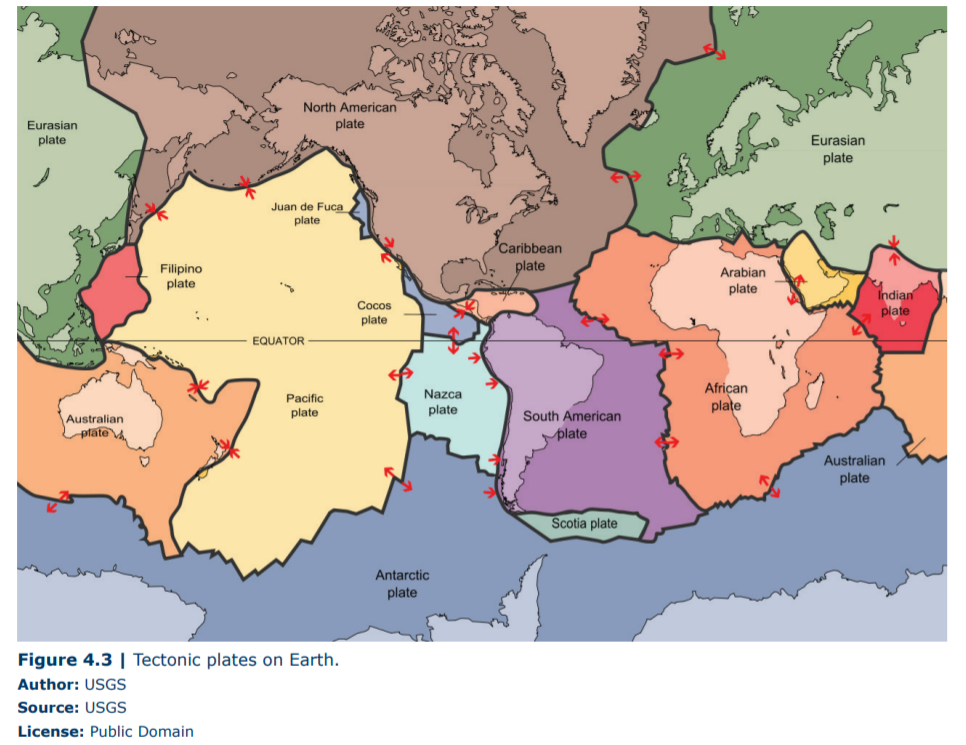4.6: Plate Materials
- Page ID
- 5482
By now you can see many different lines of evidence that the tectonic plates are moving (there are many additional lines of evidence as well). To build a theory we need an explanation or a mechanism that explains the patterns that we see. The theory of plate tectonics states that the outer rigid layer of the earth (the lithosphere) is broken into pieces called tectonic plates (Figure 4.3) and that these plates move independently above the flowing plastic-like portion of the mantle (Asthenosphere).

Tectonic plates are composed of the crust and the uppermost mantle that functions as a brittle solid. These plates can be composed of oceanic crust, continental crust or a mixture of both. The Oceanic Crust is thinner and normally underlies the world’s oceans, while the Continental Crust is thicker and like its name consists of the continents. The interaction of these tectonic plates is at the root of many geologic events and features, such that we need to understand the structure of the plates to better understand how they interact. The interaction of these plates is controlled by the relative motion of two plates (moving together, apart, or sliding past) as well as the composition of the crustal portion of the plate (continental or ocean crust).
Continental crust has an overall composition similar to the igneous rock granite, which is a solid, silica-rich crystalline rock typically consisting of a mixture of pink (feldspar), milky white (feldspar), clear (quartz), and black (biotite) minerals. Oceanic crust is primarily composed of the igneous rock gabbro, which is a solid, iron and magnesium-rich crystalline rock consisting of a mixture of black and dark gray minerals (pyroxene and feldspar). The difference in rock composition results in distinctive physical properties that you will determine in the next set of questions.


